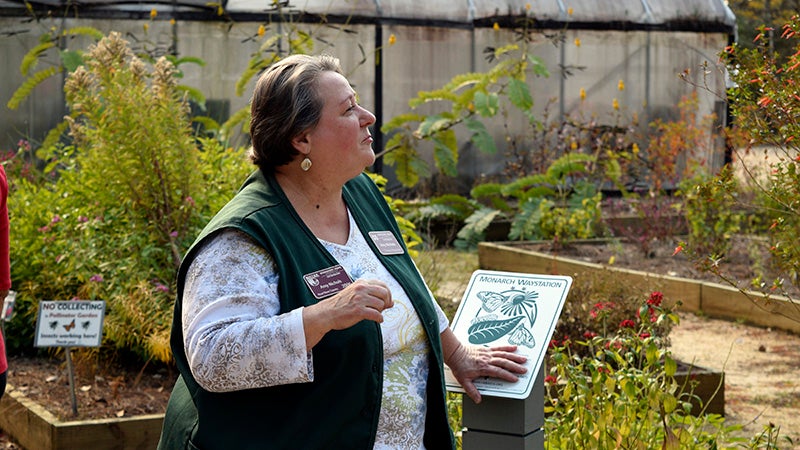Crosby Arboretum’s garden becomes way station for monarch butterflies
Published 7:00 am Friday, December 1, 2017

- WAYSTATION: Pearl River County Master Gardener Amy Nichols explained how plants that support monarch butterflies should be planted by citizens of Pearl River County to support the butterflies. Photo by Victor Tun
Members of the Monarch Watch Program met at the Crosby Arboretum Wednesday afternoon to rededicate the kid’s butterfly garden into a monarch butterfly waystation. The insects travel north during this time of the year, Director of the Crosby Arboretum Patricia Drackett said, and while performing that feat they need a place to stop to rest.
The Monarch Watch Program keeps track of monarch butterflies and their path when they travel from Mexico to either the Gulf Coast or more northern points, such as Canada, Pearl River County Master Gardener Amy Nichols said.
“When the butterflies make their trip up north, they travel around 50 miles per day,” Nichols said. “In order to recover their energy, they need a big amount of nectar food along the way, which is becoming a scarce resource.”
A couple of years ago, the Arboretum established a children’s butterfly garden, but with the large amount of nectar producing plants already in the garden, the Arboretum decided to change the space to a waystation for traveling monarchs to produce a new generation, Nichols said.
“Drackett and I learned about how the monarch butterflies were in trouble because deforestation has been an ongoing issue for many years now,” Nichols said. “With this issue going on, the number of nectar producing plants has been decreasing more and more every year.”
Monarch butterflies leave Mexico at about mid-March and lay eggs at least four times during their migration north. The fourth and last generation of monarch butterflies travel back to Mexico at about August, Nichols said.
“Milkweed are the only plants that monarch butterflies will consume as a food source and lay their eggs on,” Nichols said.
According to information provided by Nichols, monarch larvae need to eat between 20-50 milkweed leaves in order to reach the next stage of their life cycle.
“The Monarch Watch Program and I encourage everyone across Pearl River County and across Mississippi to plant milkweed plants around their home in order to help monarch butterflies continue their annual path,” Nichols said.



